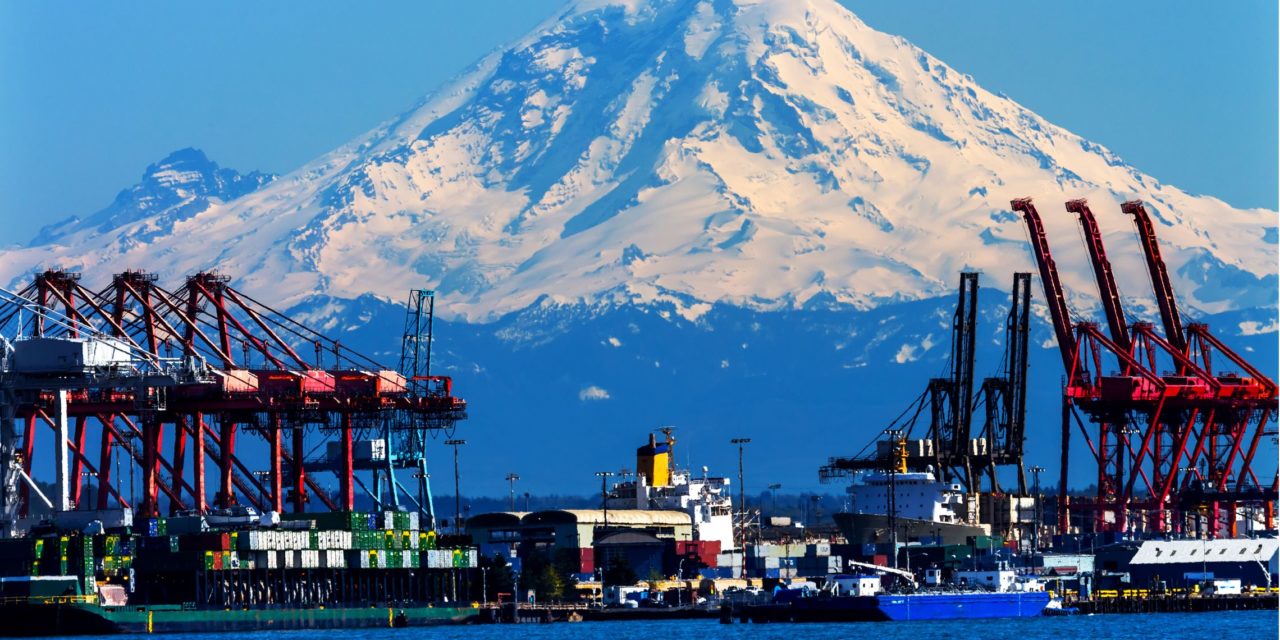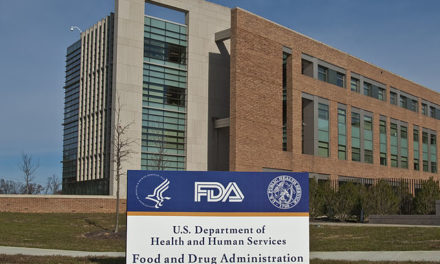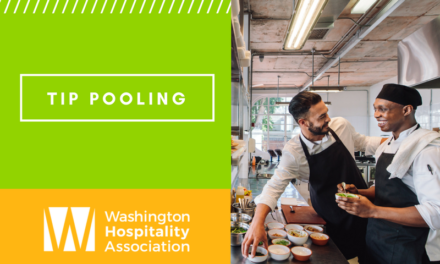The supply chain has become a buzzword recently, which underscores its importance to the business community. However, many people who are affected professionally by supply chain disruptions have no reliable source to turn to for local, in-depth coverage and analysis. For that reason, the Washington Hospitality Association will be focused on bringing you the most relevant information regarding the supply chain in 2022. This article is the first in a series of pieces that you can find in our supply chain toolkit here, along with updated news from other sources.
The supply chain in 2022: How did we get here?
In November 2021, we talked with distributors in the know about the current state of the supply chain and asked them what we can expect in the coming months. With 2022 underway and supply chain challenges still looming, we’re taking another look at what’s transpired and how it’s affecting operators.
There were two main takeaways from our conversation with distributors in November:
1) The backlog at the ports is a huge issue
2) More shortages are coming, and it doesn’t look like things are going to get better any time soon.
The supply chain turmoil is a complex, multi-faceted issue, but let’s start with the basics: Were the predictions correct and are things still getting worse? How did we get here, and what more do we know now?
Ports
The consensus among the distributors we spoke to was that the slowdown at the ports didn’t have a clear or immediate solution, and any signs of relief had not yet presented themselves. At the time, in the fall of 2021, a shortage of truck drivers and rising costs of raw materials were just two of the many contributors the bottleneck at the ports. Those factors led to 96% of restaurant operators in November saying they recently experienced food shortages or delays.
At that time, President Joe Biden had already called together a taskforce to address supply chain discontinuities and the Biden administration pushed for round-the-clock operations at ports. In response, the Port of Los Angeles in California said it would handle more goods at night after a similar move by nearby Long Beach port. The ports – which handle 40% of all cargo containers entering the U.S. – had faced months of problems.
The Port of Seattle has also been doing its part to keep things moving. The new Terminal 5 increased capacity at the port by 40% and container ships are no longer idling in Puget Sound at the rate they were last year. However, a chain is only as strong as its weakest link – and last-mile truckers are still in short supply – which means goods are still experiencing significant delays before they reach their final destination.
Despite good news on the horizon, many operators are still treading water. What sort of issues are hospitality businesses continuing to face, and what can they do about it?
Our current outlook
Many feared a Christmas crisis, but that was averted. However, the same issues persist. Staff shortages continue and operations are far from returning to normal. The fact is that many of the problems are the same operators have been facing since the start of the pandemic (like staffing and supply shortages), which can be a double-edged sword. While it may have given businesses time to adapt to these shifts in consumer habits, it can also wear a business down to face the same struggles for so long.
Still, our industry has met these challenges with innovation. Something many restaurants highlighted in the summer of 2020 when we hosted a restaurant roundtable was an efficient menu. That trend has continued. The National Restaurant Association says more than 80% of restaurants have recently changed their menu, and most people said it was because of food shortages.
This echoes a sentiment shared by the members of the roundtable in 2020 who recommended restaurateurs change their menu to be more efficient and delivery friendly with ingredients that are easiest to source. Once again, in 2021, distributors recommended the same thing but added that you also might want to raise your prices – before your suppliers raise them on you.
Another theme from our supply chain discussion in November was planning. Order the things you need, anticipate the worst, and store what you can. If you do that, even the dreaded tequila shortages and champagne price increases that spirits distributors predicted shouldn’t break your business. One business specializing in imported goods has been able to thrive even through the pandemic and supply chain struggles because they did exactly that. Seattle Caviar says they placed orders eight months ahead of time, in addition to carrying easily sourced caviar from the west coast and Idaho. They are having their best year ever.
But some businesses have finally reached their breaking point. A recent survey found that 60% of the restaurants in the country say that sales were down by more than half. Four out of five of those that never got Restaurant Revitalization Fund grants say they are in danger of closing.
While not all the struggles hospitality businesses currently face can be directly attributed to the supply chain, most businesses have been impacted in some way. In addition to innovation and foresight, government aid has played a huge part in keeping many businesses afloat.
Aid
Right now, the single best relief program available is the Employee Retention Tax Credit (ERTC) for which businesses impacted by pandemic-related government mandates are eligible. Businesses can qualify for up to $26,000 per W-2 employee. The ERTC is like a grant for your business, and it doesn’t need to be repaid and you may be eligible even if you received a PPP loan. You can learn more and get the process started at our ERTC support center.
The Restaurant Revitalization Fund was also a crucial resource for businesses and the National Restaurant Association is leading the charge to replenish the fund and save restaurants across the country. For more information and to urge Congress to act now, click here.
Coming soon
We will be updating the Supply Chain toolkit every week and posting stories about the supply chain over the coming months, so be sure to check back regularly.
Labor shortage deep dive
Labor scarcity isn’t just facing hospitality businesses, it’s affecting the whole supply chain. This article will take a deeper look at how that is affecting businesses in Washington. We’ll give you an update on:
- Long-haul and last-mile truckers
- The impact of shortages on hotels and restaurants – similarities and differences.
- Creative solutions to systemwide shortages that local businesses have employed.
Local differences
- How do the problems facing Washington state differ from other states because of geography and supplier tendencies?
- How do localities in Washington differ from each other? What can you expect because of weather disruptions in different areas of the state?
Hotels and the supply chain
- For food
- For labor
- New laws coming
Efficient product sourcing
- Local suppliers for food
- Advice from distributors
Legislative and policy updates
- Tariffs, national trade policy update.
- Data on some imported goods and information about spirits, fruit, salt, and aluminum shortages.
- Local legislative update
- Inflation update
















![[Class, May 20] ServSafe Manager, Kent](https://wahospitality.org/wp-content/uploads/2018/07/CALEND1-150x150.png)








